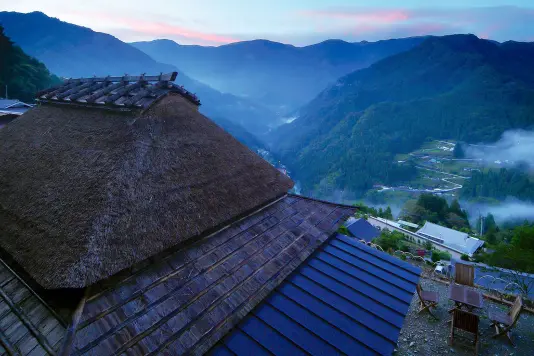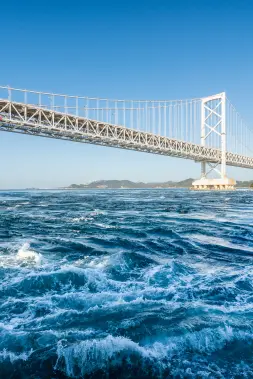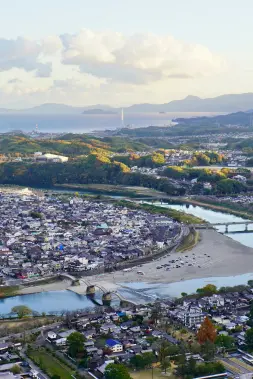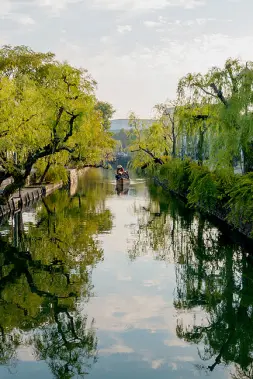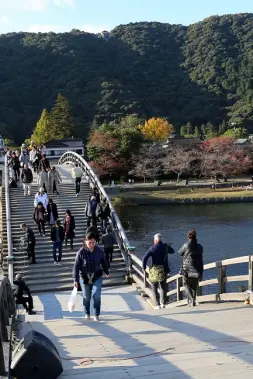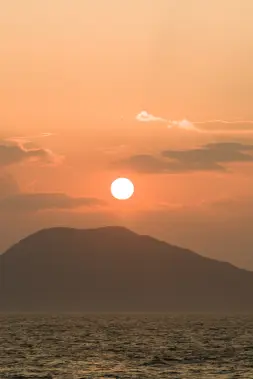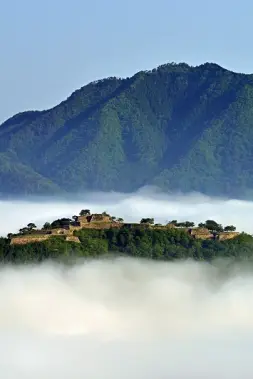Adventure & Experience
Why the Future of Environmental Sustainability is Found in Kamikatsu

-
- DESTINATION NAME
- Tokushima
-
- RELATED TAGS
-
- LAST UPDATED
- 30 April, 2021
One could think of dozens of reasons for a relaxing drive into the Tokushima countryside. The crisp morning air kept me alert and refreshed as I rolled down my window, admiring the first signs of the coming Spring in the early blossoms of cherry trees and spring flowers. So with all of this natural beauty to enjoy, why was I headed to a recycling center?
Kamikatsu: Japan’s First Zero Waste Town
The Kamikatsu Zero Waste Center located in central Tokushima literally begs the question, "Why?" Constructed in the shape of a question mark by award-winning architect Hiroshi Nakamura, the center asks us why do we need to consume so many disposable goods? Why do consumable products need to produce so much waste? And why are we throwing away things that are perfectly good to use?
A remote village in the middle of Japan's Shikoku Island seems an unlikely place to spawn an environmental revolution, but Kamikatsu did just that in 2003 when it boldly proclaimed its desire to be a zero-waste town by the year 2020. Although not yet achieving their lofty goal, the town residents currently recycle over 80% of what they use, well above the national average of 20% in Japan.
The decision to become a zero-waste town wasn't simply an act of unselfishness on the part of the residents but also an act of necessity. According to an article in The Guardian, strict new emission laws enacted in 2000 forced the shutdown of two incinerators that served to dispose of the town's waste. With no money to build a new incinerator or ship their garbage to other disposal sites in the area, the move toward zero-waste was almost forced on Kamikatsu residents. Eventually, the naysayers either got on board or moved away; today, the people of Kamikatsu are looked up to as pioneers of environmental sustainability within Japan and internationally.
Innovating Sustainability at the Zero Waste Center
The Kamikatsu Zero Waste Center is the epicenter of the environmental movement. Residents bring their waste here, separated into 45 different categories to be reused or recycled. Volunteers at the center help ensure everything is sorted correctly and issue gentle reminders to those who can't remember all of the rules.
I roamed around the Zero Waste Center grounds freely while a volunteer led a small group of Japanese visitors on a guided tour. After nearly 20 years, the people of Kamikatsu have recycling down to almost a science, with perfectly arranged assortments of metals, plastics, and commercial goods. Anything that can be used again in its current condition is "resold" in the Kuru Kuru shop, which is not a shop but a place where residents are free to take any items they want or need. Dishes and glassware made up most of the items in Kuru Kuru, with the remainder being a few articles of clothing, small furnishings, and children's toys.
Even though it is primarily a waste disposal site, the Zero Waste Center has evolved into a kind of community center. In a small town where homes are scattered across a wide area, the center provides a common meeting place for locals to socialize and share ideas. Perhaps the concept of community was conceived beforehand, with a spacious and inviting community room and a laundromat built into the building.
One place that you cannot tour on your own is Hotel Why, billed as the world's first zero-waste action hotel. Guests staying in one of the hotel's four maisonette-style rooms receive firsthand experience in the zero waste lifestyle while enjoying the natural beauty surrounding Kamikatsu through outdoor activities such as fishing or kayaking.
Great Japanese Beer with Zero Waste at Rise & Win Brewing Co.
Exploring Kamikatsu by car, a towering wall of windows loomed over the side of the road. Parking the car, I approached what appears to be a local version of the Flatiron Building...with a goat. Pausing from his grazing, the goat eyed me curiously as I came up the hill to the Rise & Win Brewing Co..This local Kamikatsu craft beer brewery is now well-known enough to have a taproom in Tokyo.
But this is Kamikatsu, and even a craft beer brewery is not just about making great craft beer but making them in an environmentally conscious way. The building itself is constructed mainly from materials recycled from waste materials, scrap wood, and bricks from a demolished building. The Kamikatz Leuven White is one of the brewery’s popular beers and is made using the peel of the yuzu citrus, formerly a waste product from a local company producing yuzu juice ponzu (a light, citrusy soy sauce). At Rise & Win, BYOB stands for “Bring Your Own Bottle,” which they will fill up for you, or if you use their bottle, you can return it to their shop. Rise & Win beer is an excellent complement to good barbecue, which they offer in the form of ribs, chicken, sausage, and pulled pork.
The building also contains a General Store selling consumable items by weight. Locals bring their own containers and purchase staples like pasta, nuts, granola, and even laundry detergent with no paper or plastic waste created.
Returning the Tokushima City, the warm rays of the late afternoon sun fell on the lush mountains of Kamikatsu as it faded from sight in my rearview mirror. It’s easy to understand why the residents take the responsibility of protecting the natural environment they have been blessed with so seriously when you experience it yourself. A visit to a zero-waste town may not be in your travel plans for Setouchi, but it is an example of the connection the local people have with nature that makes Setouchi such a special place.
How to Get to Kamikatsu
Kamikatsu is about an hour’s drive from Tokushima City. Rent a car in the city center or from the airport.
If you are coming from Tokyo, the easiest way to get to Tokushima is by domestic flight from Haneda to Tokushima Awaodori Airport, which takes about 90 minutes. If you are coming from Osaka or Kyoto, it is about a 3 to 3 and a half hour drive, respectively. The closest Shinkansen station is in Kobe and takes about a 2-hour and 15-minute drive to Kamikatsu.
Photographs and text by Todd Fong
RELATED DESTINATION
Tokushima
It has lots of tourism resources including the Naruto Strait, which has one of the largest eddying currents in the world, and the Iya Valley, which captivates everyone who sees its overwhelming natural scenery. The traditional Awa Dance Festival, which teems with 1.3 million tourists, is a must-see.
